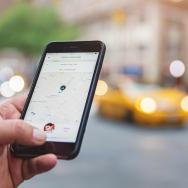UChicago economists helped lead a study that found men working for the ride-sharing platform Uber earned about 7 percent more per hour than women.
Workers in the growing “gig” economy—work done on a contract or freelance basis—have flexibility that some experts speculated could favor women. Yet despite Uber’s gender-blind algorithm for work assignments, the study of nearly two million U.S. drivers found the wage gap resulted from three factors: experience using the Uber platform, preferences over where and when to work, and the willingness of men to drive faster—and ultimately complete more trips.
“When starting the research we could see it going either way: Women might earn a bit less because they would want to work at specific, and potentially less lucrative, times that fit their other obligations better. Alternatively, women tend to work fewer hours so they might have a chance to cherry pick and focus their hours during the most lucrative times,” said John A. List, the Kenneth C. Griffin Distinguished Service Professor in Economics at UChicago, a co-author of the working paper released Feb. 6. “The value of learning on the job and the importance of driving speed, and how such forces affect the genders differently, was surprising.”
List and economists at Stanford University and Uber examined the driving records of 1.8 million drivers in 196 U.S. cities, more than 500,000 of whom (about 27 percent) were female. Men in the study earned $21.28 an hour while women were paid $20.04 an hour—a larger gap than found in previous studies of pharmacists and MBA graduates. Although there doesn’t appear to be anything built into Uber’s platform that would favor men, the study revealed details about the three factors behind the pay disparity:
- Male drivers work more: 17.98 hours a week compared to 12.82 a week for women. This gives men an edge in learning how to choose potential passengers based on how far the driver has to travel to pick them up, the distance to the intended destination and other factors that can influence pay. The researchers found that, until about their 2,500th trip, drivers are learning those skills can maximize pay. A fully experienced driver earns about $3 more an hour than a driver with 500 or fewer trips.
- Men were more likely to drive in areas and during times in which pay is higher. “We expected women would avoid certain times of the day because they would not want to confront drunk riders or the like,” List said.
- Men drive 2.2 percent faster than women working for Uber. That increases the number of trips they can fit into the hours they work. Previous research backs up a higher degree of risk tolerance among men than women.
Any changes Uber might make to try to close its wage gap might be counterproductive, List said. The current system rewards experience, which he calls “good for everybody.” List, who also is a consultant with Uber, said the company plans to use the results to make the experience better for consumer and drivers.
“Supposing they can do so safely, both riders and drivers would prefer to arrive at the destination sooner,” List said. “It is an important but complicated issue to determine what is the ‘right’ gap, in terms of fairness and overall happiness of the various stakeholders.”
Along with Prof. Paul Oyer and Asst. Prof. Rebecca Diamond of Stanford University, List worked on the study with Uber Director of Policy Jonathan Hall and Uber data scientist Cody Cook. Cook is a University of Chicago undergraduate student in economics.
